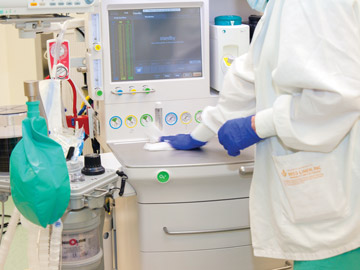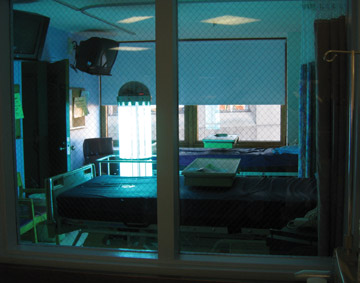The short- and long-term impact of COVID-19 will surely include a radical change in how surface disinfection is practiced and enforced. "All of my surgical facilities are asking the same thing: "When are we going to get back to normal?'" says Donna Nucci, RN, MS, CIC, infection preventionist at Yale New Haven (Conn.) Hospital and owner of her own consulting business.
She tells them the same thing: Surgery will eventually return to a new normal, one with an increased focus on how well and how often you clean high-touch areas in operating rooms and common areas. Case volumes will eventually ramp up and when they do some experts predict a boom in elective surgeries. That means it might be best to use this temporary lull in the action to revisit surface cleaning protocols and plan for improvement in a post-COVID-19 world.
"The science is most likely not going to change, but implementation will," says Ms. Nucci. "This is a wakeup call for outpatient facilities to make sure their cleaning protocols align with CDC guidance, including the use of EPA-approved cleaning products and a clear process for performing surface disinfection."
Ms. Nucci expects the CDC to increase its oversight of surface disinfection processes. "Regulatory agencies and patient advocacy groups may require you to have a structured environmental cleaning program in place," says Ms. Nucci. "I think we're going to see many more checks and balances."
That's why you should revisit your surface cleaning protocols now — before case volumes pick up again. To prepare and comply with surface disinfection requirements, Ms. Nucci recommends looking to CDC and AORN guidelines for the most effective products and practices.
There is a heightened awareness of cleanliness and disinfection right now.
— Dean A. Caruso, MBA
To take surface disinfection a step further, consider incorporating high-tech whole room disinfection solutions as an adjunct to your manual processes. Research has shown that ultraviolet (UVC) light technology can kill pathogens on OR surfaces, including multidrug-resistant superbugs. There are several available options in portable UVC equipment designed to enhance traditional disinfection practices. Another option is hydrogen peroxide vapor disinfection, which has already seen some success in disinfecting entire hospital wards efficiently and effectively, according to Nancy Havill, MT (ASCP), MHA, CIC, infection prevention manager at Yale New Haven Health. "We use the technology to disinfect the entire ward, then put patients back in it," explains Ms. Havill. "We did it back in 2006 when we had an increase in C. diff incidence and saw a significant decrease in our infection rates. We're currently exploring the opportunity to decontaminate our COVID-19 units."
While the coronavirus hasn't changed Yale New Haven's cleaning procedures or the chemicals staff use for disinfection, it has changed the frequency in which the process is done. Pre-pandemic, the hospital's environmental services staff would perform a high-level surface disinfection of common area bathrooms two to three times per shift, which is a very good rate. Now, however, they disinfect the bathrooms nine to 10 times per shift.
"There is a heightened awareness of cleanliness and disinfection right now," says Dean A. Caruso, MBA, executive director of support services and sustainability at Yale New Haven. "Everyone understands that just because something looks clean, it could still make them sick."
Patient expectations are also going to be different when surgery begins to ramp up, notes Ms. Nucci. "They're going to start asking questions — "?How often are you cleaning? What are you cleaning with? Am I safe?'" she says.
"We've had patients ask how often we clean our elevator," says Stephen Branch, director of environmental services at Yale New Haven's York Street facility. "That never happened before the pandemic."
.svg?sfvrsn=be606e78_3)


.svg?sfvrsn=56b2f850_5)